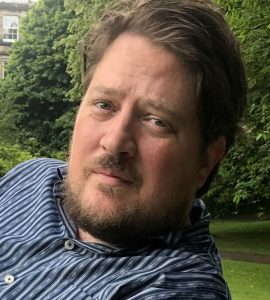Educational Principles of Digital Humanities

Digital Humanities is entering the teaching curriculum of most Western Universities. But what is DH in fact? And how should it be taught? Quite often Digital Humanities is offered as a light, generic introduction to tools, data and methods for humanities students of any background. In this setting, DH is something extra, something novel and something that is often identical in the design of courses in different disciplines and departments. This is both understandable and a let-down because no two humanities faculties or even departments are the same, so how can the solution with respect to teaching digital humanities be generalized?
Another typical way of organising the teaching of digital humanities is through the idea of instructing humanists how to code and give them an opportunity to renew their methodological approach to data and tools. But, also this programming approach is surprisingly similar in different disciplines and departments compared to the vast differences between core humanities subjects. Are all the disciplines actually unified with respect to methodological needs or is it that we have identified and started to meet these needs in only some of the subjects while borrowing most of the methods from other fields of science?
All of this goes to show how difficult it is to ground a new methodological approach, such as digital humanities, to “traditional” disciplines. At the same time, changing the way core humanities subjects, such as history and area and cultural studies, are taught and practiced is a difficult task. There is a genuine worry that Digital Humanities is not integrated in the traditional disciplines and it becomes increasingly difficult to make a real impact on what a degree in humanities actually has to offer a student entering the ever changing job market.
The gap between digital humanities and traditional disciplines and the struggle for digital humanities to establish its own identity raises a number of different questions and challenges. Many scholars have opted for the “big tent” approach to digital humanities that can cover more or less anything. How can one cope teaching something like this? What is the added value? There seems to be a clear difference in the maturity of linguistics and cultural heritage with respect to use of digital methods. How can the methods be developed from the perspective of digital cultural heritage as well? One aspect of digital humanities is different learning environments. How can an effective multimodal aspect integrated in all humanities teaching? The knowledge base of students in the humanities varies a great deal. How can we set realistic and desirable learning objectives in this environment? It is easy to say that understanding the digital world will make humanists strong in the job market. But how do we actually implement this? The generalist nature of humanities can be both strength and a weakness. But how do we package digital humanities and the ability to adapt and engage in critical thinking so that it meets the requirements of the modern world?
The idea of this talk is to discuss many of these open ended (and rather difficult) questions and offer some further thoughts on them by explaining how these challenges are tried to be met by developing teaching in digital humanities at the University of Helsinki. The main learning objective that we have identified is to help students find a common language within the humanities, the social sciences, and data science. In the long term, this will enable the renewal of a scholarly culture and also prepare students to work as professionals outside academia. Core of Helsinki Digital Humanities educational philosophy is to promote cross-disciplinary collaboration. What is unique about digital humanities teaching at the University of Helsinki is that all the offered courses have a specific aim: students are able to put their skills and abstract knowledge into practice at the end of each academic year in a multidisciplinary research project entitled Helsinki Digital Humanities Hackathon. Thus, they are acquiring skills that will be useful to them regardless of whether they are thinking about an academic career or aiming to find a job outside academia. We try to offer a select group of MA students the opportunity to integrate into relevant research groups at the University. MA track in digital humanities serves two general objectives: 1) renewing the scholarly culture in particular areas of the humanities through the co-creation of innovative methods; 2) meeting the challenge of digitization in the training of humanities professionals to maintain their core ability for critical reflection in the digital world, and at the same time to participate in multidisciplinary collaboration with professionals of different backgrounds.
Mikko Tolonen is a tenure-track professor of digital humanities at the Faculty of Arts at the University of Helsinki. His background is in intellectual history and he is the PI of Helsinki Computational History Group at the Helsinki Centre for Digital Humanities (HELDIG). In 2015-17 he worked also in the National Library of Finland and its project on digitized newspapers as professor of research on digital resources. He is the subject head of digital humanities and he has designed the DH teaching modules at the Faculty of Arts. He is the chair of Digital Humanities in the Nordic Countries (DHN) and he is part of the executive committee of the European Association of Digital Humanities (EADH). His current main research focus is on an integrated study of public discourse and knowledge production that combines metadata from library catalogues as well as full-text libraries of books, newspapers and periodicals in early modern Europe. In 2016, his research group was awarded an Open Science and Research Award by Finnish Ministry of Education and Culture.
